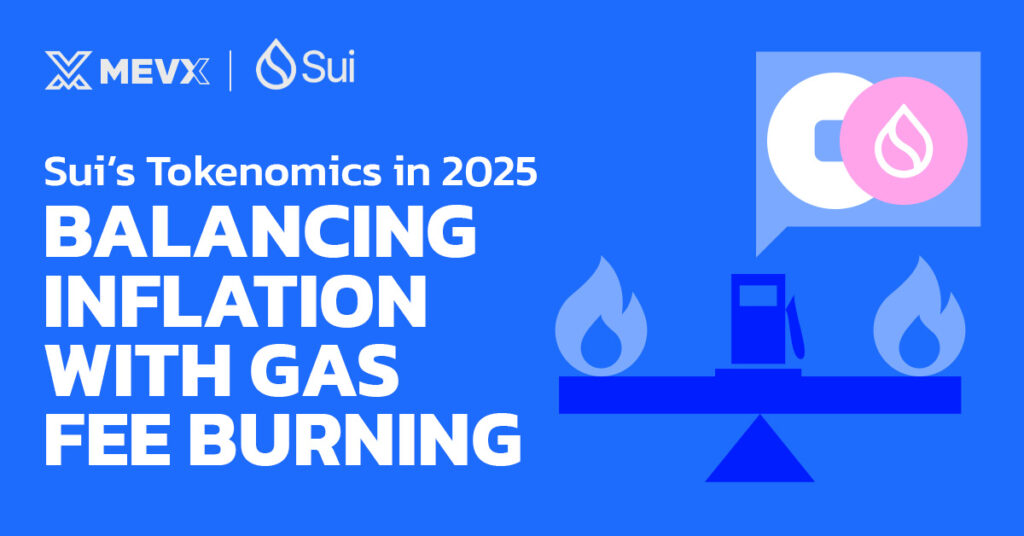Sui’s tokenomics in 2025 can be said to be one of the most finely tuned models within Layer 1 blockchains. Its setup is a balancing act between inflationary staking rewards and deflationary pressure by way of gas Fees burned. The model is not only developed to be rewarding to validators but also to provide ultimate longevity to the SUI token and the entire ecosystem at large.

Token Supply and Inflation in 2025
Sui’s tokenomics in 2025 is capped at 10 billion SUI in supply. The majority of the supply has already been added to the circulating supply in the form of staking rewards, community distributions, and ecosystem-building grants.
To validate, validators are rewarded with new SUI tokens based on managed inflation. The inflation rate is around 5% to 7% per annum, depending on staking activity as well as overall network activity. This keeps the network secure and decentralized while keeping the emissions at bay through smart economic design.
Gas Fee Burning: The Built-In Deflationary Mechanism
Inflation offsetting, Sui has a deflationary mechanism via tokenomics in the context of burning gas fees. All transactions in the Sui network are accompanied by a gas fee in SUI. Part of the fee is burned irreversibly, thus offsetting the total token supply in the long run.
It is a rate of burning proportional to the usage of the network. The more transactions that happen, the more SUI is burned. This market-based, adaptive solution to inflation is directly correlated to on-chain activity.
Key Benefits of Gas Fee Burning in Sui’s Tokenomics
- Controls Net Inflation: Helps offset staking emissions through network usage
- Utility-Driven Scarcity: More transactions lead to more burning, encouraging organic deflation
- Long-Term Value Support: Reducing the circulating supply improves the scarcity narrative
- Predictable Monetary Policy: Encourages confidence among developers, users, and investors
Dynamic Equilibrium in Sui’s Tokenomics in 2025
The strongest point in Sui’s tokenomics in 2025 is real-time balancing of supply forces. Whereby inflation increases when validator rewards are increasing, it would be thought that increasing network utilization would translate to increased burn rates. As the utilization decreases, emission decreases due to the effect of decreasing gas demand and reward staking rebalancing.
This interaction ensures that SUI is sustainable as a payment utility token and store of value for token holders. It is not based on artificial scarcity or competitive emissions but on real-world use and ecosystem traction.
Ongoing Challenges and Adaptive Governance
Even with its thoughtful design, Sui faces challenges:
- Low usage periods may cause burn rates to fall behind staking rewards
- Gas volatility during peak activity could affect user experience
- Validator incentives must stay aligned with overall network goals
Sui’s governance system allows for real-time adjustments. Parameters such as reward rates, gas pricing, and burn ratios can be optimized through community proposals and protocol updates, maintaining economic health regardless of market cycles.
Conclusion
Sui’s tokenomics 2025 shows the potential for a Layer 1 blockchain to utilize inflation and deflation in a manner that promotes growth, security, and long-term value. By linking token emissions to validator performance and offsetting them against a gas fee burning mechanism, Sui has created a thriving, sustainable economy.
As expanding adoption and more and more projects are being developed on the network, Sui’s architecture scales to keep pace. Its capability to reward interaction without value trade-off but possibly be the tokenomics design benchmark of the year or so ahead.
Share on Social Media:
